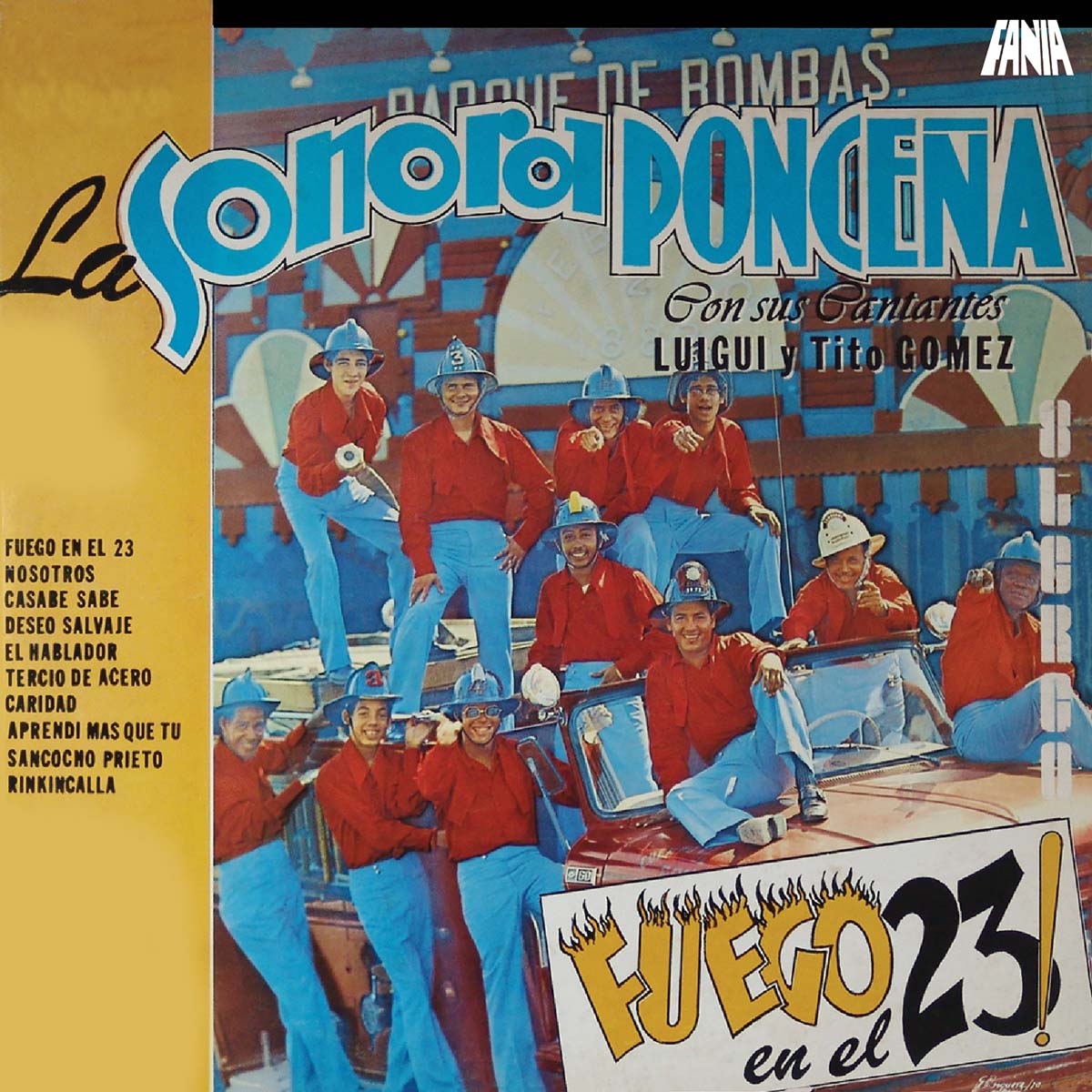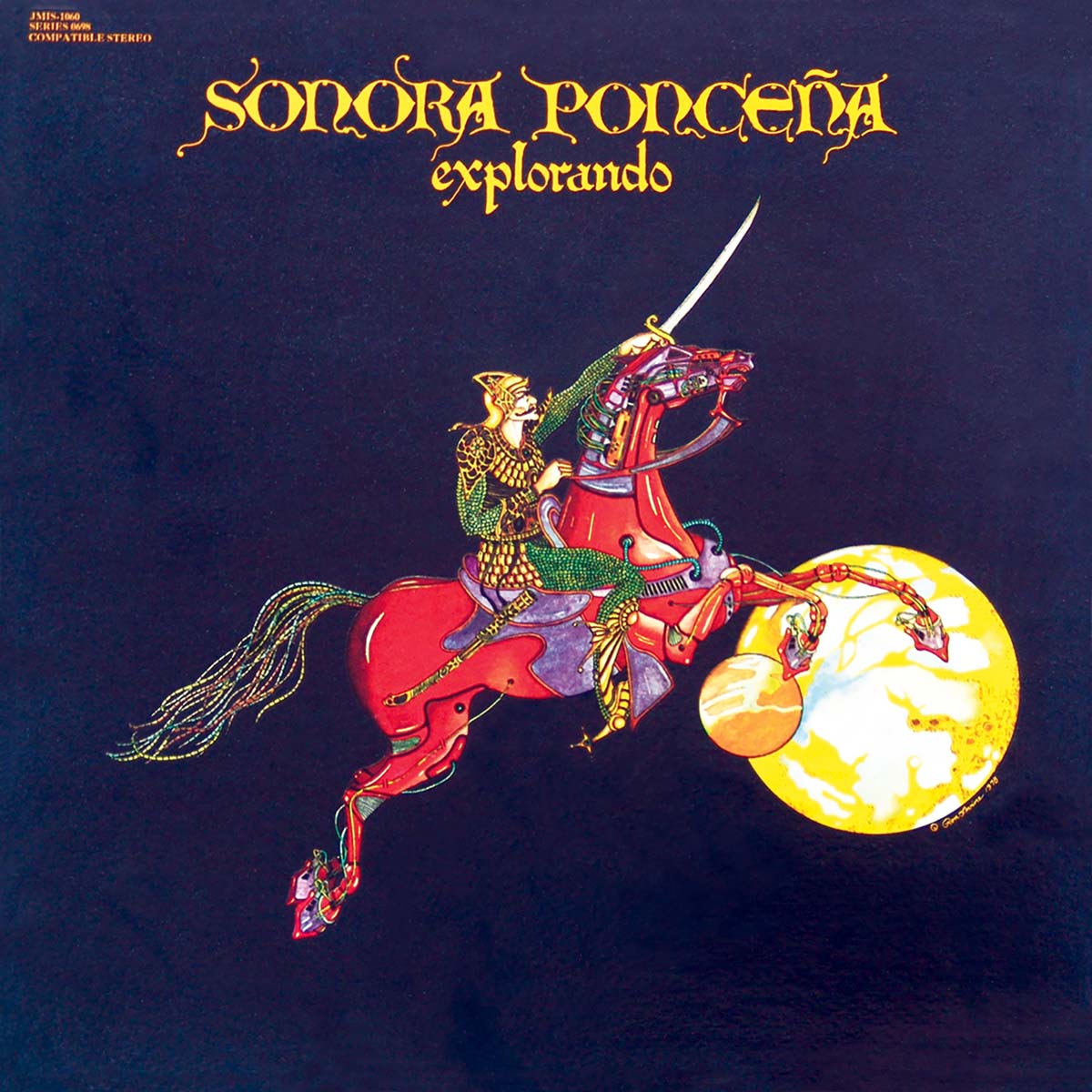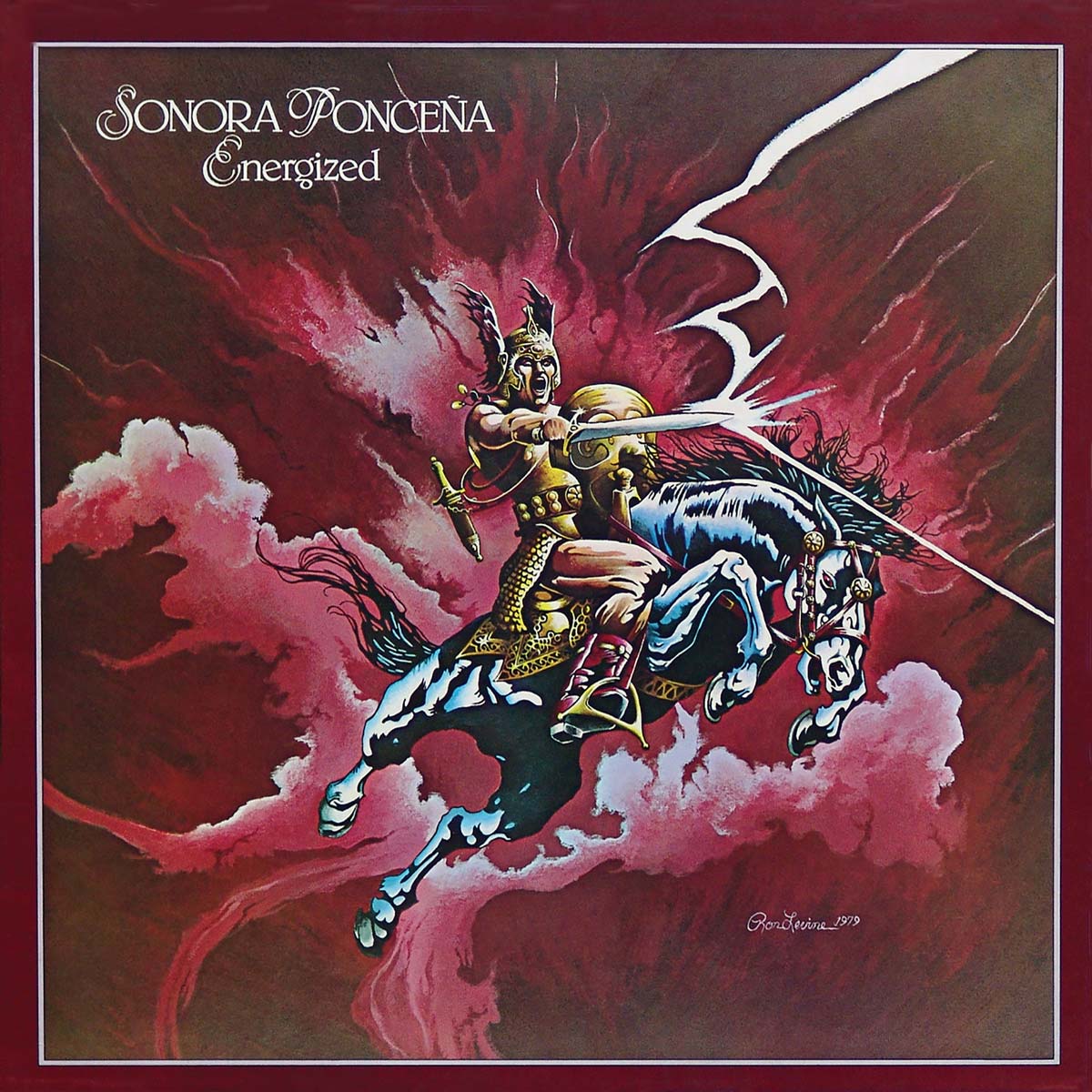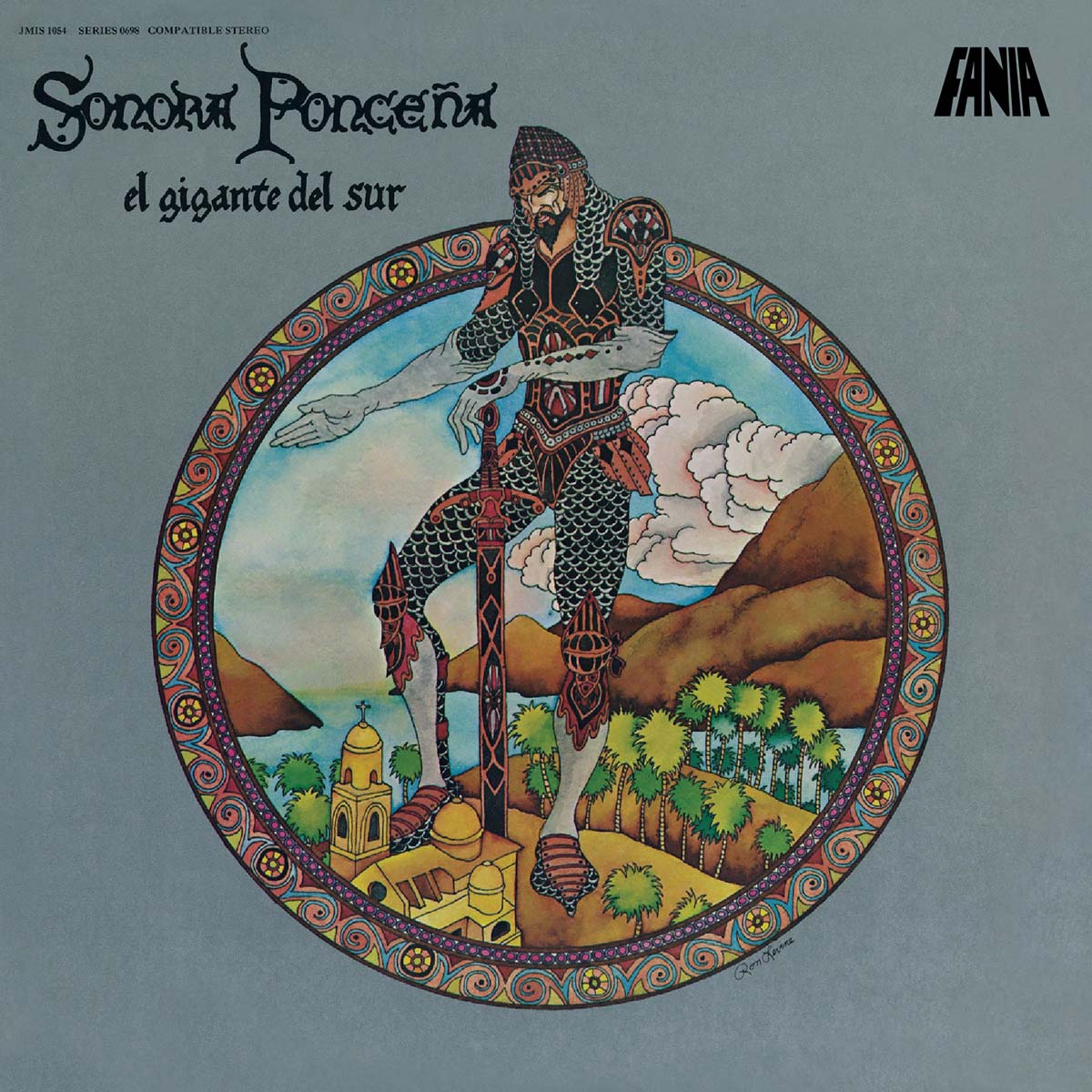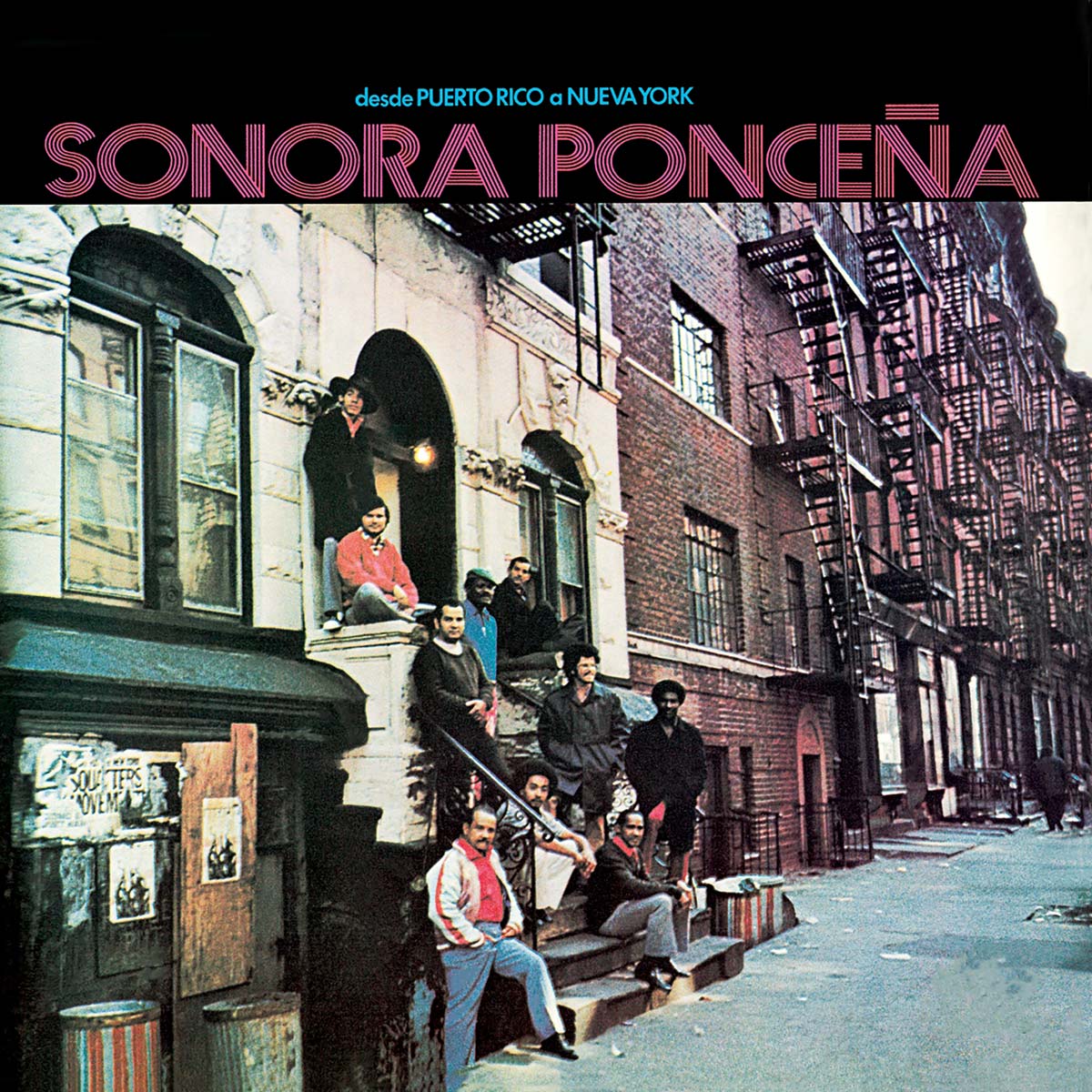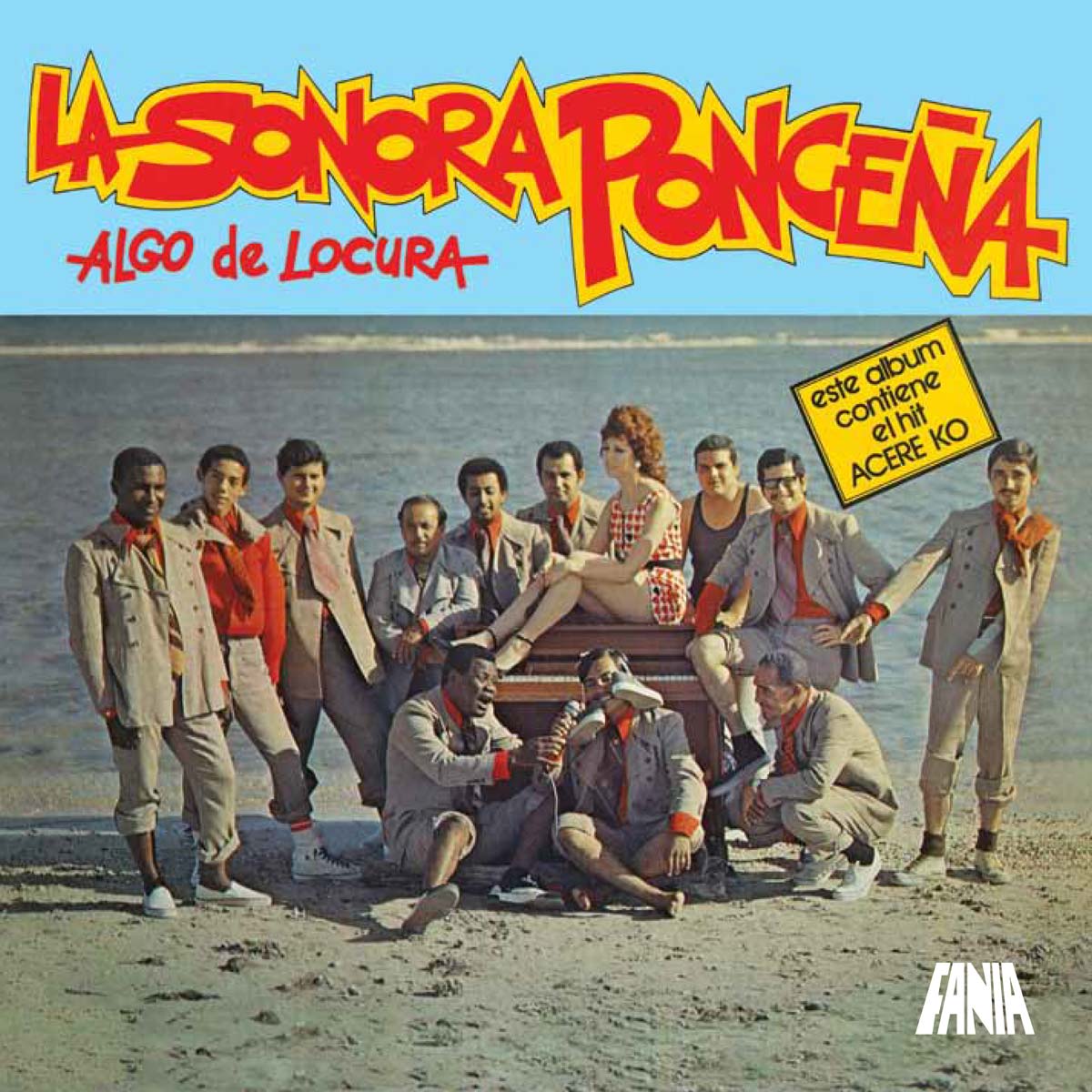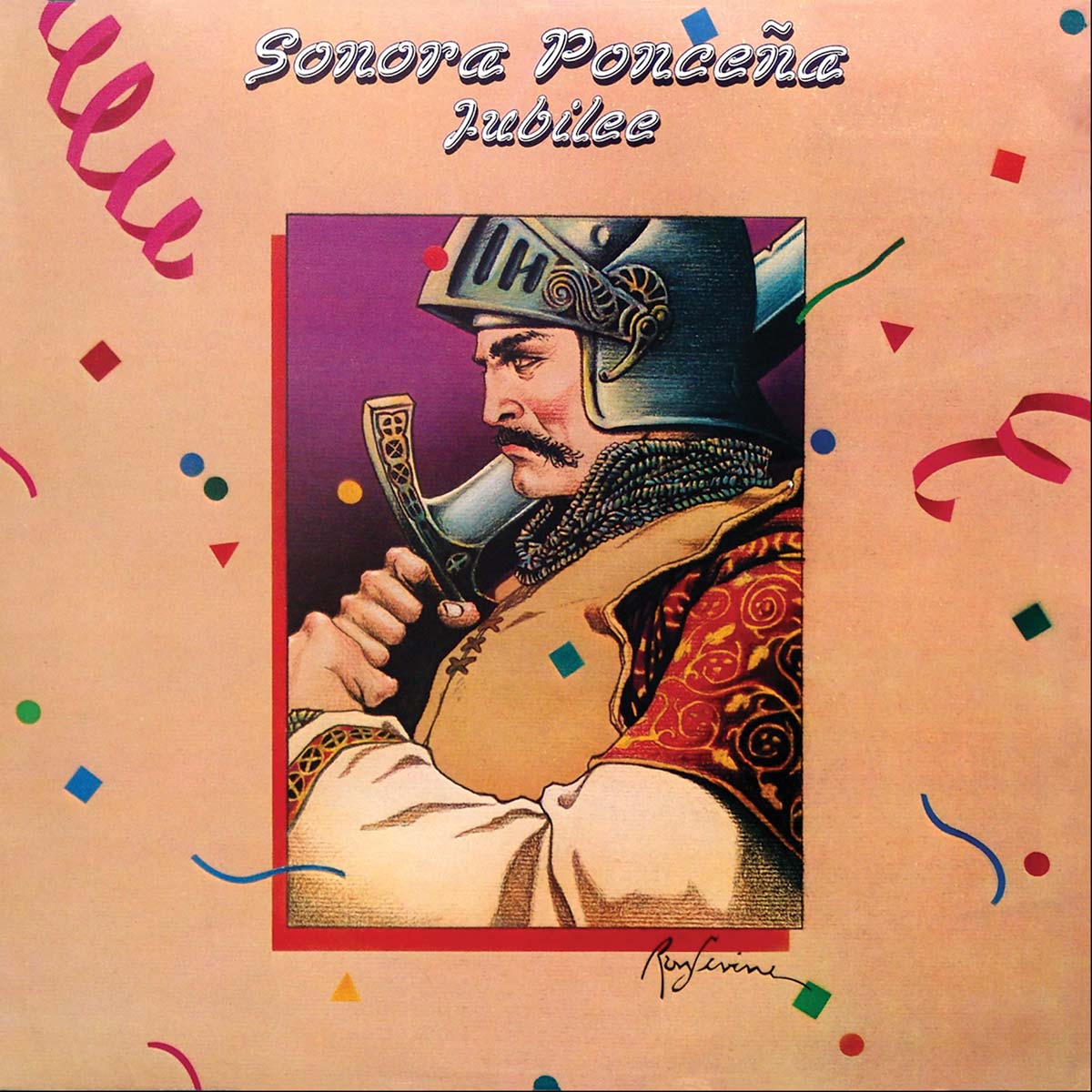
The history of La Sonora Ponceña begins in Ponce, Puerto Rico. La Ponceña started with just two trumpets and no piano and is now an international musical institution with an immediately recognizable, clear, and pronounced four trumpet sound. It is directed by one of the most important piano players in Latin Music: Papo Lucca.
What do you do when you are a band that has been around far more years than most? La Sonora Ponceña has been together 51 years and has recorded over 30 albums. In true Puerto Rican fashion, you celebrate, and you do it any chance you get. In 1985 La Sonora Ponceña decided to celebrate their 30 years. They celebrated by releasing Jubilee, an album that combines new material with fresh versions of some classic hits. “Jubileo” is a term used to proclaim a special reason to celebrate. “Jubileo 20”, recorded by La Sonora Ponceña in Energized (1979) became in 1985 “Jubileo 30”. In the year 2000 they recorded it one more time as “Jubileo 45” to celebrate their 45th anniversary. The lyrics in each version remain the same but they have become more meaningful with each new “Jubileo”. They allude to the international acceptance and impact of La Sonora Ponceña. “De Berlin hasta Hong Kong, de Colombia a Nueva York….viene la Ponceña con sabor”. The main chorus speaks about how proud they are of the fact that they have not sacrificed their quality for the sake of commercialization. “La Sonora toca con cache.” The version “Jubileo 30” is an upgrade in harmonic sophistication. This same improvement is also evident in the medley of classic Ponceña songs at the end. After a short piano intro by Lucca, the medley presents songs representative of three different eras of La Sonora Ponceña. It starts with “Hachero Pa’ Un Palo” (1969) and “Fuego En El 23” (1970). These were also the titles of two albums on the Inca label in which the influence of Arsenio Rodriguez is prominent. In 1971 Jerry Masucci, co-founder (with Johnny Pacheco) of Fania Records purchased the Inca Label. La Sonora continued to record for Inca and produced 30 albums. The medley celebrates this middle flourishing period of the 1970s with “Boranda” (El Gigante del Sur, 1977) and “Pio Pio” (Musical Conquest, 1976), and it ends with “Sonora Pa’l Bailador” and “Timbalero”, two cuts that appeared in New Heights (1980).
During the 1980s, despite the appearance and popularity of “Salsa Romantica”, La Sonora Ponceña, under the leadership of Papo Lucca , remained true to a more authentic and hard driving sound, all the while progressing and introducing new ideas. This is consistent with Lucca’s personal development as a musician. Papo Lucca gradually developed his own piano solos and technique by merging the influence of traditional Cuban pianists like Lili Martinez Griñan with his interest in jazz, and particularly jazz pianist Oscar Peterson. During the 1980s Lucca started to use the electric piano more and began to include a Latin Jazz theme on every record. “Satin N’ Lace”, composed by Philip Sunkel, and previously recorded by Tito Rodriguez on Live at The Palladium (1960) is the Latin Jazz cut on Jubilee. After a trumpet solo by long-standing band member ‘El Cordobes’, Lucca delights us with his ability to deliver a short but tasty solo. The influence of jazz in Jubilee is also evident in the horn arrangements, for example, in the new version of their classic hit “Fuego en el 23”. The instrumental passages are longer and harmonically dense. During the 1980’s Lucca started writing his own arrangements of compositions by contemporary Cuban authors. “El Soñador” is a composition by Adalberto Álvarez, leader of Son 14. The song tells the story of a Latino immigrant in the United States. The dreamer (“Soñador”) of a better future is not only disappointed, but dies as a result of pneumonia from the cold. “Se fue para el norte y murio de pulmonia”. “Odiame” (composed by prolific song writer, Roberto Anglero) and the bolero “Nunca Seras Mia” are new songs that, while they reflect the 1980’s preference for romantic lyrics, they do not have the commercial salsa romantic sound of the times. Throughout the 1990s and at the start of the new millennium La Sonora Ponceña continues to produce music “con cache”. The re-mastering of their historical recordings is a good reason for a new “Jubileo.” Jubileo 2006!!
Credits:
Personnel:
Quique Lucca – Leader
Papo Lucca – Piano
Ramon Rodriguez “El Cordobes” – Trumpet
Delfin Perez – Trumpet
Heriberto Santiago “Ayatolah” – Trumpet
Angelo Velez “Pocholo” – Trumpet
Toñito Ledee – Singer
Manuel Martinez “Mannix” – Singer
Pichy Perez – Singer
Antonio Santaella – Bass
Efrain Hernandez – Bass
Vicente Rivero “Little Johnny” – Conga
Angel L. Hernandez “Angelito” – Bongo
Jessie Colon – Timbal
Edwin Rosas – Guiro
Chorus – Toñito Ledee, Pichy Perez, Papo Lucca, Mannix, Edwin Rosas
Arranger: Papo Lucca
Recording Director: Quique Lucca
Producer and Musical Director: Pappo Lucca
Executive Producer: Jerry Masucci
Assistant to the Producer: Tony Conga
Album Cover Design: Ron Levine
Recorded at: Crescendo Studios, Puerto Rico
Chief Engineer: Alan Manger
Assistant Engineer: Cheo Feliciano Jr.
Thanks to: Maya Acciani
Written by Dr. Gregory “Goyo” Pappas



